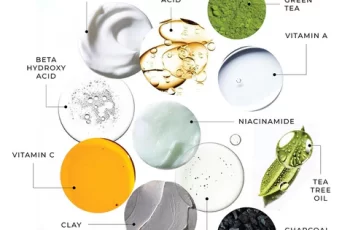
Can Azelaic Acid Be Used Together with Retinoids?
Even if you’re not into skincare, you’ve probably heard of the ingredient retinol, also known as retinoids. It’s earned a solid reputation for its effectiveness and impressive results, especially for those who are acne-prone or concerned about the signs of aging.
Speaking of azelaic acid, I wouldn’t be surprised if you said you’ve never heard of this powerful substance. It’s truly an unsung hero that’s been getting a lot of attention lately. If you’re still a little confused, let’s do a quick recap of what these ingredients are and how they work on the skin.
What is a retinoid and how does it work on the skin?
Retinoids are a potent form of vitamin A that are known for their impressive anti-aging and anti-acne properties.
It works by increasing the rate of skin cell turnover, which can naturally last up to 30 days. This shouldn’t be confused with exfoliation, as retinol works deeper in the skin to boost collagen and elastin production.
It’s known for its high effectiveness, but it can often cause skin irritation, flaking, dryness, and itching, especially when you first introduce it to your skincare routine.
For best results, you should use retinol in your routine at night, as the ingredient loses its effectiveness and becomes completely useless when exposed to UV rays.
If you want to learn more about retinol/retinoids, read our dedicated blog post. We also explain whether retinol and retinoids are the same substance, which you can read here.
What is azelaic acid? How does it work on the skin?
Derived from grains such as wheat, rye, and barley, azelaic acid has anti-inflammatory and antibacterial properties.
Azelaic acid can effectively clear out bacteria that build up in your pores, helping to fight pimples and common acne.
It also contains anti-inflammatory properties that help fight redness, rashes, and other skin conditions such as rosacea.
Azelaic acid gently removes dead skin cells from the surface of the skin, rejuvenating your complexion and giving you a healthy glow all over.
For more information on how azelaic acid can benefit your skin, check out our dedicated blog post. You can also find several other blog posts about this smart acid and the best ways to use it in your skincare routine.
Now let’s get into the details of whether you can use azelaic acid and retinoids together.
Can retinol and azelaic acid be used together?
Yes, you can certainly use retinol and azelaic acid together. Both ingredients work on the skin in similar ways and successfully address certain skin issues like acne and hyperpigmentation. Dark spots and melasma are two major issues that can be treated by combining these powerful approaches.
This is because azelaic acid inhibits the enzyme tyrosinase, which is responsible for the production of melanin, the pigment in the skin that often makes hyperpigmented areas appear darker. Retinol supports the effects of azelaic acid by boosting cell turnover and making dark spots less noticeable.
Which comes first, azelaic acid or retinol?
This depends on the consistency of the product, as a basic skincare rule is to apply formulas in order from thinnest to thickest. If both are similar products with the same consistency, the order of application does not matter.
You just have to focus on whether your skin has developed a tolerance for both ingredients. Therefore, we recommend that you slowly introduce each ingredient into your routine at first. Ideally, you should alternate between using them at night, one at a time, to give your skin the boost it needs while avoiding any unwanted irritation or breakouts. Once your skin is used to using both azelaic acid and retinol products together, you can then use both products in your daily routine. For best results, wait about 30 minutes between applications to allow your skin’s pH to rebalance.
How to Use Azelaic Acid, Retinol, and Vitamin C?
Using all three active ingredients may take some time for the skin to adjust to the application. Once you have achieved this and your skin is not showing any signs of irritation, you can then use all three products in your daily routine. The most effective way to do this is to start with a vitamin C-rich serum in your morning routine. Not only will this help restore your skin’s radiance, but the antioxidant-rich vitamin C also provides additional protection. They fight any free radical exposure, such as UV rays, pollution, and other environmental aggressors.
You can then use azelaic acid and retinol in your evening routine, starting with the thinnest formula.
This is the most effective way to use these ingredients to keep your skin healthy and radiant, improving the overall finish and texture of your skin. Before using any of these ingredients, we recommend that you consult with your doctor or dermatologist to make sure your skin can tolerate all three ingredients in your routine.
What not to mix with azelaic acid?
It is believed that it is best not to mix azelaic acid with beta hydroxy acids (also known as BHAs, such as salicylic acid). This is because the skin is exfoliated too much and the two acids work on different layers, causing an imbalance in pH. If you want to learn more about what not to mix with azelaic acid, read our dedicated blog post for more information.
I hope I answered some of your questions today about using azelaic acid and retinol. Don’t forget: If you have any other questions, visit us on Instagram. You can reach one of our skin care experts in a private message!


